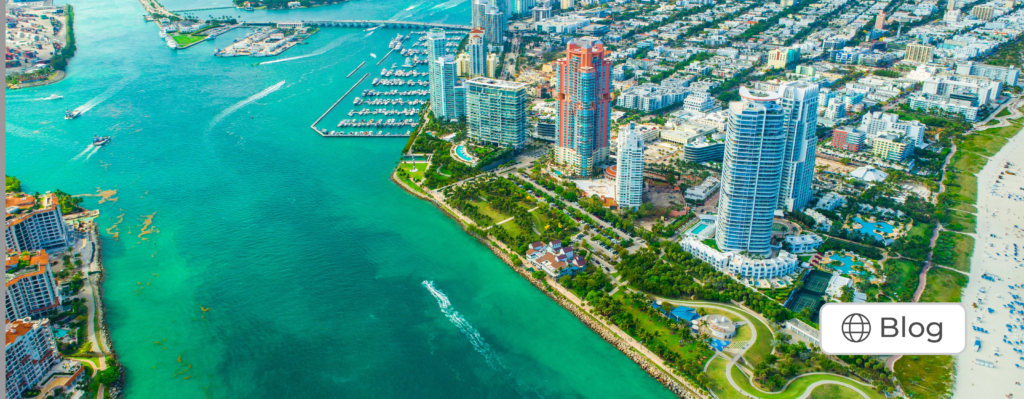Floating homes are gaining popularity worldwide, and Miami is no exception. These structures, which combine architectural innovation, sustainability, and luxury, offer an interesting alternative for those seeking a different lifestyle more connected to nature. Floating homes are more than just boats adapted for living; they are high-tech residences designed to provide all the comforts of a traditional house, with the added benefit of being situated directly on the water.
The concept of floating homes is not new, but it has evolved significantly in recent years. Originally, they were basic structures used primarily as temporary shelters for fishermen or sailors. Today, however, floating homes can be true luxury properties, featuring sophisticated designs and premium materials. They are built on floating platforms that adapt to water movements, making them resilient to flooding and other climate-related challenges.
The construction process of a floating home typically begins on land, where much of the structure is manufactured. It is then assembled on a floating base, which can be made of concrete, fiberglass, or steel—materials resistant to corrosion and suited for aquatic environments. These homes are fully customizable, and it’s common for luxury homeowners to integrate features like swimming pools, solar energy systems, private docks, and panoramic terraces. All of this makes floating homes a statement of luxury and lifestyle.
These high-end properties are designed to attract an exclusive audience seeking to combine modern comfort with proximity to the water. Luxury floating homes are far from the simple or rustic homes we might imagine. Instead, they are equipped with all the necessary amenities for modern living: from gourmet kitchens and marble bathrooms to smart home systems that control everything you can imagine.
In cities like Amsterdam, Seattle, and Stockholm, floating homes are already part of the urban landscape, and their evolution has been impressive. Developers are investing in sustainable designs that include advanced technologies such as rainwater harvesting and greywater recycling, reducing their environmental impact. Additionally, these projects are often located in prime areas, offering stunning views and exclusive access to waterways.
Sustainability: Living in Harmony with the Environment
One of the main appeals of floating homes is their ability to integrate sustainably with the environment. These homes represent a more eco-friendly option compared to traditional land-based construction. Being on the water, floating homes do not require altering the land or affecting local ecosystems, significantly reducing their ecological footprint.
Modern floating homes are designed to be self-sufficient in many ways. Many use solar panels for energy, rainwater collection systems for water supply, and advanced wastewater treatment technologies that minimize the impact on the marine environment. In some cities, entire floating communities are being developed, where homes are interconnected and share resources, creating a kind of sustainable “floating village.”
Nautical Lifestyle: A New Form of Luxury in Miami
Miami, with its prime location between the Atlantic Ocean and Biscayne Bay, is an ideal place for floating homes to thrive. The opportunity to have direct ocean access for water sports, yachting, or simply enjoying sunsets over the water is an unmatched attraction. Additionally, many floating home developments in Miami include amenities like private marinas, restaurants, and shops that are only available to residents, creating exclusive communities with a relaxed and sophisticated atmosphere.
For luxury buyers, these homes represent the perfect balance between privacy and proximity to urban life. Just minutes from the hustle and bustle of South Beach or downtown, floating homeowners can retreat to the tranquility of their homes on the water, enjoying a view of the Miami skyline that only they can experience.
Innovation in Floating Home Design and Construction
The design and construction of floating homes have advanced remarkably over the past decade. Luxury developers are collaborating with naval architects and engineers to create structures that are both aesthetically pleasing and highly functional. The floating platforms on which these homes rest are designed to be incredibly stable, utilizing cutting-edge technologies that allow the homes to withstand adverse conditions on the water.
The panorama outlined by the previously mentioned features suggests that floating homes fit well into the concept of luxury and sustainability in Miami’s real estate market, offering an innovative solution and an unparalleled living experience, blending the nautical lifestyle with contemporary luxury. As technology advances and people seek more sustainable ways of living, floating homes are likely to remain a growing trend in the real estate world.
